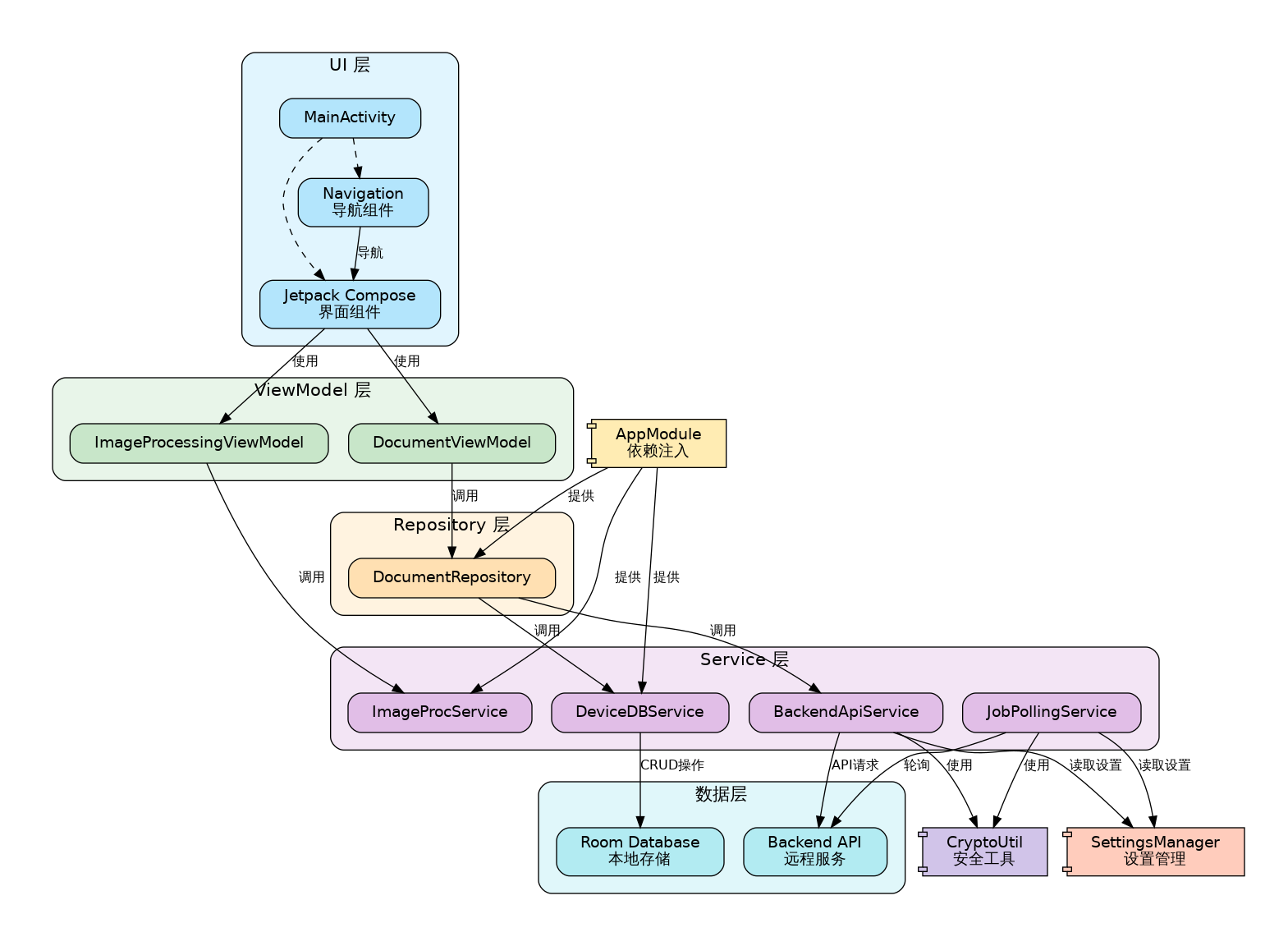Overall Architecture and Layer Description
DocuSnap-Frontend adopts the MVVM (Model-View-ViewModel) architecture pattern, combined with the Repository pattern and a layered architecture. This approach ensures a clear separation of concerns and improves maintainability.
Architecture Diagram

Note: The architecture diagram shows the relationships between different layers and components of the application.
Layer Description
The application is divided into the following layers:
UI Layer
Responsibility: Build user interfaces, handle user interactions, display data
Main Components:
MainActivity: Main entry point of the applicationJetpackComposeUI components: Build declarative UIsNavigationcomponents: Manage screen navigation
ViewModel Layer
Responsibility: Manage UI state, handle business logic, connect UI and data layers
Main Components:
DocumentViewModel: Manage document-related operations and stateImageProcessingViewModel: Handle image processing logic and state
Repository Layer
Responsibility: Abstract data access logic, coordinate multiple data sources
Main Components:
DocumentRepository: Provide document data access interface
Service Layer
Responsibility: Provide specific functional services, handle background operations
Main Components:
DeviceDBService: Local database serviceJobPollingService: Backend job polling serviceBackendApiService: Backend API communication serviceImageProcService: Image processing service
Data Layer
Responsibility: Provide data storage and access
Main Components:
Room Database: Local data storageBackend API: Remote service interface
Data Flow
Data in the application follows a unidirectional flow principle:
- User interactions in the UI layer trigger actions in the ViewModel layer
- The ViewModel layer processes these actions and requests data from the Repository layer
- The Repository layer retrieves data from either local or remote data sources
- The data flows back through the Repository to the ViewModel
- The ViewModel updates its state, which is observed by the UI layer
- The UI layer automatically updates to reflect the new state
This architecture provides a clear separation of concerns, improves testability, and enhances maintainability of the application.